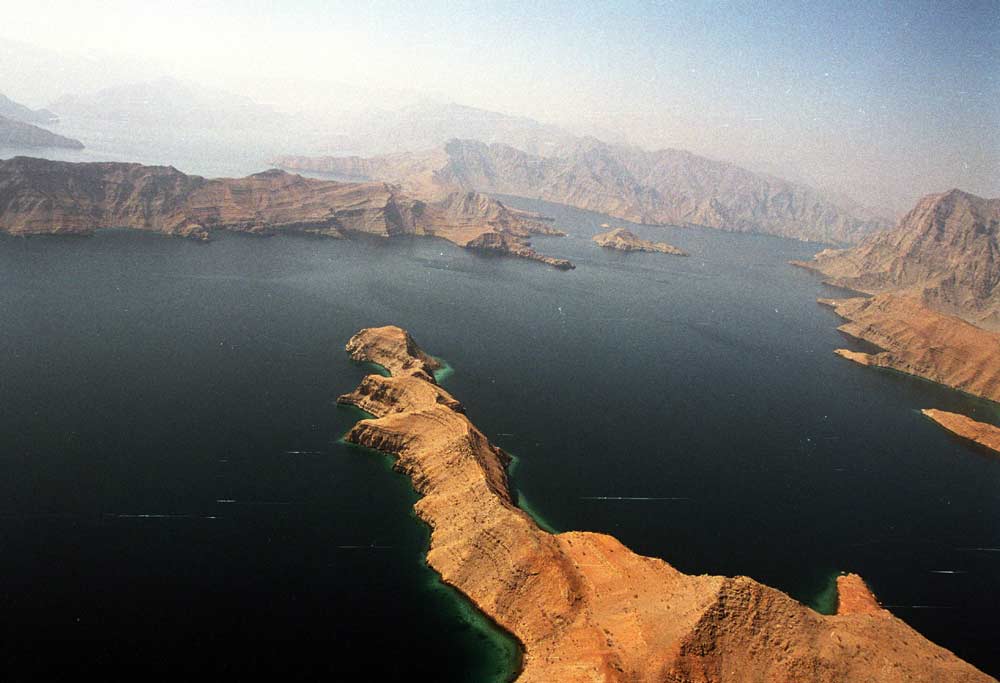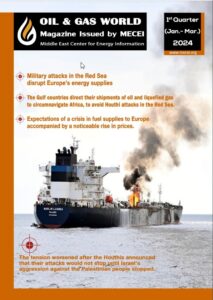- QatarEnergy selects Nakilat to own and operate 25 conventional LNG vessels
- The joint development of the Dorra field between Saudi Arabia and Kuwait is pending the demarcation of the border with Iran
- Minister of Energy reaffirms the UAE’s commitment to adopting clean energy and supporting the Paris Agreement
- The new Hassi Messaoud refinery enjoys the support of the government and President Tebboune
- Increasing electrical interconnection capacities to export electricity beyond borders
- Qatar Energy stops sending liquefied gas tankers through the Red Sea for security reasons
- The inauguration of the Duqm Refinery, the largest joint Gulf project in the refinery sector
- Saudi oil exports are faltering due to Houthi attacks on ships in the Red Sea and Gulf of Aden
- Algeria to host and chair the Gas Exporting Countries Forum summit (February 29 to March 2, 2024)
- Egypt Energy Conference and Exhibition 2024 gives a strong impetus to the global energy dialogue

Strait of Hormuz

Strait of Hormuz
One year before, and according to (UPI), Abu Dhabi was rushing to complete a $3.3 billion underwater oil pipeline from the United Arab Emirates to an export terminal on the Gulf of Oman to bypass the endangered choke point Strait of Hormuz.
Iran has threatened to close the narrow waterway at the southern end of the Persian Gulf and cut off one-fifth of the world’s oil supply in an escalating confrontation with the West in the region over its nuclear program. An average of 14 supertankers carrying 15 million-17 million barrels per day transit the strait every day, with three-quarters of the oil heading for Asia to supply energy-hungry China, India and Japan.
The Abu Dhabi project is part of a concerted effort by the Arab monarchies lining the western shore of the gulf to find ways to minimize the impact of a possible blockage of Hormuz through which their vital oil and natural gas exports pass.
These efforts are unlikely to be able to find alternative export route for all the oil produced in the gulf. As things stand now, they will only be able to handle a fraction of the region’s daily production.
Saudi Arabia, the world’s largest oil producer, has said it will use its 2 million bpd of spare production capacity to cover any shortfall. But without export outlets, that doesn’t mean much.
In UAE, a confederation of seven mini-states, it is reiterated that they will be able to use ports on the Gulf of Oman if the strait is closed.
Fujairah, the southernmost of the emirates, has a port on the Gulf of Oman, south of the strait, which includes a major oil export terminal intended to bypass Hormuz in case of a crisis. The emirates are pinning their hopes on the 230-mile oil pipeline, most of it underwater, from the main oil fields in Abu Dhabi to Fujairah.
The Abu Dhabi Crude Oil Pipeline has a capacity of 1.5 million barrels a day, the equivalent of about 10% of the crude carried by supertankers out of the gulf every day.
When the Iranians struck, ADCOP wouldn’t be able to transport the daily outflow of 15 -17 million bpd, and none of the 31 million tons of liquefied natural gas exported by Qatar every year.
Saudi Arabia has some infrastructure to pump oil exports from the mega fields in its EasternProvince on the gulf coast, to its main terminals located at the Red Sea port of Yanbu on the kingdom’s west coast. But the only operational pipeline right now is the Petroline, which carries 5 million bpd, about 55% of Saudi current output of 9 million bpd. Petroline is used to supply markets west of the Suez Canal.
Iraq would be hard hit since 80% of its exports are shipped through the gulf, mostly bound for Asia. It has twin pipelines running north from the Kirkuk fields to Turkey’s Mediterranean terminal at Ceyhan. But these are old and open to insurgent attacks as the long pipelines would be vulnerable to such attacks.
It’s possible to reopen the 1.65 million bpd pipeline, which was used during the Iran-Iraq war, to carry oil from Iraq via Saudi Arabia.
But if Hormuz is closed, it is unlikely Riyadh would be able to do much to help Baghdad, while it needs Petroline to carry its own exports to the red sea.









